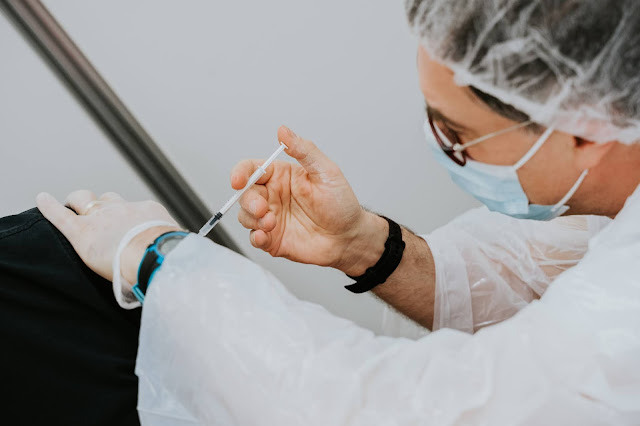 |
| Photo by Mat Napo on Unsplash |
Researchers at the Georgia Institute of Technology have developed a new vaccine delivery system that works like a gas stove lighter. With a simple click of the button, this new delivery system, called ePatch, that does not need any battery or power to operate can deliver vaccines in a pain-free manner, according to a paper in PNAS.
Conventionally, single-use needles and syringes are used to deliver vaccines. While some people have the fear of needles, there is also the risk of needle-stick injuries to healthcare workers. According to estimates from the Occupational Safety and Health Administration (OSHA), there are up to three million needle-stick injuries that occur globally with about half not being reported. Apart from risks to healthcare workers, needles and syringes are also a huge part of medical waste that is generated every year. The ePatch vaccine delivery system uses microneedles which could reduce the amount of waste generated every year.
The principle behind the ePatch is the same that labs across the world use to send material across membranes – electroporation. In this method, an electric charge is applied across membranes which increases their permeability. Researchers use this window of opportunity to send across molecules of DNA, chemicals, or drugs that they are experimenting with and see their effect on the host cells. In the lab setup, this method is carried out with specialized apparatus that is connected to a power source but designed to be a portable device, the ePatch does not need a power source at all.
Inspired by the gas stove lighter used in various parts of the world, the ePatch sources the power it needs from a piezoelectric crystal. Arranged on a 3D printed insulated case were metal microneedles spaced 0.79 mm apart. Alternate rows of microneedles were charged with opposing polarity to create a potential difference. When used on pigskin, the crystal created a peak output of 296V in about 8.6 microseconds, which is much higher than the 100V output that conventional electroporation systems in laboratories deliver in a span of milliseconds.
The researchers also borrowed microneedles from the cosmetic industry, where they are used to rejuvenate the skin but serve as electrodes on the ePatch. The microneedles penetrate the skin surface but only by about 0.01 inches (0.2 mm) and deliver the electric pulse inside the skin. Since the penetration is minimal, nerves and muscles under the skin are not stimulated, so one does not feel any pain or itching, the researchers claim.
To verify whether their method works, the team of researchers tested the delivery of an experimental DNA-based vaccine against COVID-19 in mice. To their surprise, the researchers found that their method developed a 10-fold stronger immune response than when the same vaccine was delivered an injection. The team is confident that the device will work equally well for mRNA vaccines as well, the kind Pfizer and Moderna have used against COVID-19.
The device needs to go through more rigorous trials before we will see it in the field. But an affordable and effective system without needles is on its way.
If you like this post, you might also like our other post 50 fun facts about vaccines.



1 comment
[…] came together to find the best possible ways to fight the infection. Within a matter of months, various vaccines were made and the struggle with COVID transformed into a fight against […]